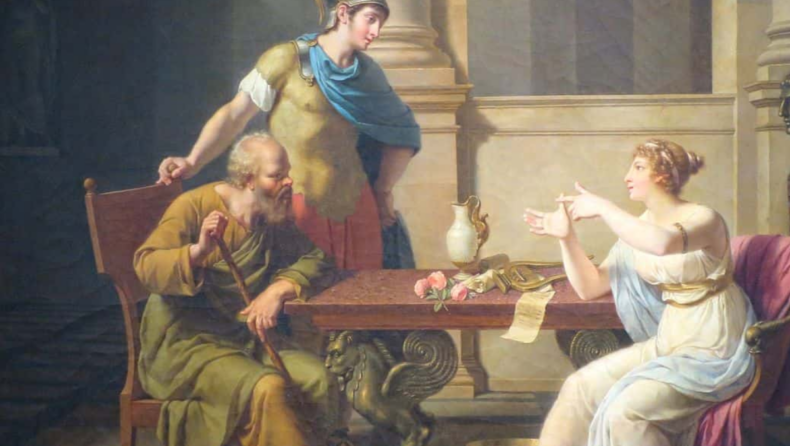Ancient thinkers often bring up images of stoic Plato conversing with attractive young men in the sun or a learned Aristotle delivering a lecture among excellent columns.
But what about the women of steel?. When will we address the women in steel?.
Did you know some fantastic women changed the history of philosophy!
Clea

Clea was an ancient priestess of Delphi (particularly active around 100 CE), a highly regarded position in the ancient world’s political and intellectual spheres.
World leaders frequently consulted the shrine’s religious practitioners for divine counsel on political issues. Clea belonged to this political-religious structure, but she valued philosophy above all else.
She frequently had the chance to have in-depth philosophical discussions with Plutarch, the most well-known thinker of his time.
For example, in the prefaces to About the Bravery of Women and On Isis and Osiris, Plutarch describes how these stimulating discussions on mortality, morality, and religious history inspired his writing.
The Ancient Aspasia of Miletus

The most well-known—or infamous—woman in Classical Athens was Aspasia of Miletus, who was most active around 400 BCE. She married Pericles, the ruler of Athens at the start of the Peloponnesian War, despite being a foreigner.
She was recognised for her fascinating brain as much as her mesmerising appearance. Socrates said that Aspasia was his teacher and that she taught him how to write effective speeches. However, he claims that she penned them for Pericles.
At least three dialogues in the philosophy of Socrates’ disciples feature her verbally, including Menexenus by Plato and the incomplete Aspasia dialogues by Aeschines and Antisthenes.
Thecla of the Ancient world

Thecla (primarily active in the first century CE) lives a typical middle-class existence, confined to her home, and prepares to get married when she first appears in the Acts of Paul and Thecla.
But as she leans out of her balcony, she hears Paul’s dramatic sermon and chooses an entirely another course.
She stays by Paul’s side, fends off numerous sexual approaches, and endures being tossed to carnivorous seals in the arena.
In the end, she receives official recognition as a teacher in her own right and launches a brilliant career. Although it’s been suggested that Thecla didn’t exist, many women were motivated to follow a life of philosophy by her mythology.
About 250 years later, Methodius of Olympus composed a philosophical discussion with numerous female participants, Thecla being the star. Macrina (another female philosopher) was given the family nickname Thecla in honour of Thecla’s philosophical and religious vocation.
Sosipatra

Sosipatra, who was most active in the fourth century CE, enjoyed the life of a successful teacher and a happy family. After receiving a mystic education from outsiders, Sosipatra developed into a revered teacher in the Neoplatonic tradition, translating challenging works and facilitating divine insight.
Her spouse Eustathius was one of the male professionals that surrounded her. Her popularity, however, was higher than any of theirs, and students chose her inspired instruction, according to Eunapius’ biography in his Lives of the Philosophers.
Macrina the Younger

The younger Macrina In a large, powerful, well-educated Christian family in Cappadocia, Macrina (c. 330–379 CE) was the oldest of ten children.
She successfully converted her ancestral estate into a flourishing community of male and female ascetics while maintaining the family’s unity through her astute mind, pious soul, and strong determination.
Gregory of Nyssa, her brother, honoured her sage advice in the biographical Life of Macrina and the intellectual discussion On the Soul and Resurrection.
In the latter, Macrina exhibits extensive knowledge of philosophy, theology, and the physical sciences during a discussion with her siblings about death as she lies dying.













